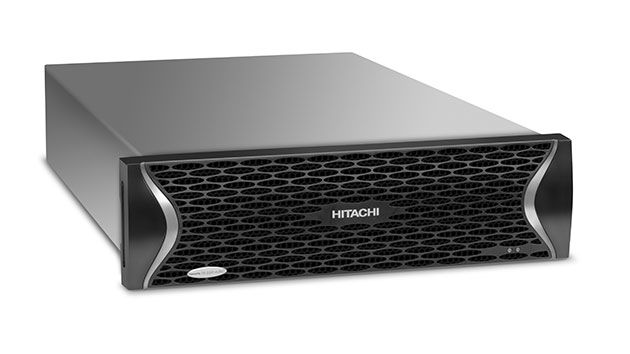How the Company's Storage Hardware Ensures Fast Data Transfers in Demanding Environments
WIth the purchase of BlueArc last year, Hitachi Data Systems solified its access to the technology BlueArc used to address NAS performance in markets where speed, reliability and flexibility are key. On the eve of SIGGRAPH, we asked Hitachi to fill us in on how the BlueArc technology has been integrated in the HItachi NAS Platform, and what it means to visual effects professionals.
The former BlueArc technology is designed to make file-level NAS systems used in content creation as fast and efficient as possible. Specifically, the file system is written into hardware, which allows file transfers to take place two or three times more quickly than they would on a general-purpose NAS appliance running a file system in software. This kind of hardware-assisted file server is ideal for transferring large files with high disk I/O requirements.
"You need a NAS system that can handle this without slowing down," explained Ravi Chalaka, VP of solutions marketing. "A lot of boxes will solve the problem, but you still have a downside on snapshots, data replication, archiving and transcoding because the same processor is trying to do multiple jobs — running a file system plus other data-management functions. Our hardware design is dedicated to file transfer, and a daughterboard handles the other management functions in order to maintain high performance. It's all about the artist being productive and not waiting while the render is going on." Chalaka also noted that Hitachi's NAS platform also automatically tiers storage, allowing files that are accessed less often to be moved to lower-cost disks according to policies set by the system administrator.
Jeff Greenwald, Hitachi's marketing lead for media and entertainment, stressed that it's not enough for a NAS system geared toward VFX artists to simply maximize throughput for huge files. "Very large data files require a sequential playout of the data, but when you're doing compositing, paint and output, doing partial file restores or deliverying shots to the director over a wide area network, you're delivering very small files," he explained. "Data doesn't always look the same as it moves from content-capture through ingest and production and finally out to transcode and delivery. The artist usually lives at one of those stops along the way and just wants data now — fast, simple and easy. But the IT manager is trying to consider all the elements. Looking for an architecture that addresses multiple approaches [to transferring data] is the way customers end up choosing our systems."
Chalaka said Hitachi's NAS device scales nicely enough that it's a good solution for smaller facilities as well as major corporate installations. "We've gone as low as 15 to 20 artists in a small company doing commercials," he recalled. "Their productivity mattered the most. They could buy low-cost NAS solutions, but then they would not be delivering on schedules as quickly as they delivered on our system. The only thing we don't do is very small, entry-level, low-cost systems. A 20 TB solution is the lowest one we'd recommend. And you don't need to buy another NAS head to go from 20 TB to 30 TB or 40 TB. You just buy another disc. We can scale up to 90,000 IOPS per node, which is 10 times what some entry-level boxes can do. With ours, if you want to scale up to 90,000 IOPS, just add more disks."
According to Greenwald, the storage component of an entry-level HDS NAS system starts in the $50,000 to $100,000 range, plus any additional software or other components a studio might purchase with the system.
Hitachi Data Systems will be exhibiting at SIGGRAPH next week to showcase some customer success stories in the VFX and animation markets.











Leave a Reply